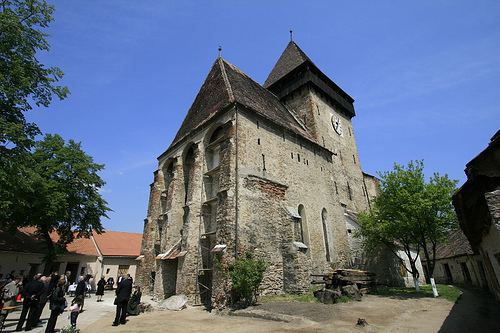Telephone code (+40) 269 or (+40) 369 Area 5,432 km² | Area rank 24th ISO 3166 code RO-SB | |
 | ||
Clubs and Teams CS Gaz Metan Mediaș, FC Inter Sibiu Points of interest Brukenthal National Museum, Council Tower of Sibiu, ASTRA National Museum, Bâlea Lake, Holy Trinity Cathedral - Sibiu Colleges and Universities Lucian Blaga University, Rumänisch‑Deutsche Universität, Alma Mater University of Sibiu | ||
Sibiu ([siˈbiw]) is a county (județ) of Romania, in the historical region Transylvania, with the capital city Sibiu.
Contents
- Map of Sibiu Romania
- Name
- Demographics
- Geography
- Neighbours
- Economy
- Politics
- Tourism
- People
- Administrative divisions
- References
Map of Sibiu, Romania
Name
In Hungarian, it is known as Szeben megye, and in German as Kreis Hermannstadt. During Austro-Hungarian administration, from 1876 to 1918, there was a county with similar name (see: Szeben County).
Demographics
In 2011, it had a population of 375,992 and the population density was 78/km².
At the 2011 census the county has the following population indices:
Religion:
Urbanisation - 5th most urbanised county in Romania:
Traditionally, the biggest minority in the county were Germans, but their numbers have decreased since World War II and especially the Romanian Revolution of 1989.
The south side of the county, closer to the mountains was mainly inhabited by Romanians (Mărginimea Sibiului), and the north side of the country - the Transylvanian Plateau was inhabited evenly by Germans and Romanians, but most Saxon villages are now deserted. The Roma population, mainly from southern Romania, was placed close to the villages in the Communist period and have since increased their numbers.
Geography
This county has a total area of 5,432 km².
In the South side there are the Carpathian Mountains (Southern Carpathians) - Făgăraș Mountains with heights over 2500 m, Lotru and Cindrel which make up to 30% of the county's surface. The Olt River crosses the mountains over to the South of Romania in Sibiu County forming one of the most accessible link between Transylvania and Wallachia. In the North side there is the Transylvanian Plateau.
The most important rivers crossing the county are the Olt in the South with Cibin its main effluent, and the Târnava in the North.
Neighbours
Economy
Sibiu County has one of the most dynamic economies in Romania, and is one of the regions with the highest level of foreign investment.
The predominant industries in the county are:
The biggest natural resource in the county is natural gas, especially in the north side, having one of the largest sources in the country.
In Copșa Mică during the communist period there were two chemical industrial complexes which polluted the environment heavily with carbon black, heavy metals, and other chemical substances. That's why the area is still considered one of the most polluted communities in Europe. Fortunately, after 1989 many of the industrial complexes were shut down and the area is slowly recovering.
Politics
The regional legislature is the County Council. Its president was Martin Bottesch (Democratic Forum of Germans in Romania), from 2004 to 2012.
The Sibiu County Council, elected at the 2016 local government elections, is made up of 33 counselors, with the following party composition:
Tourism
The main tourist attractions in the county are:
People
Administrative divisions
Sibiu County has 2 municipalities, 9 towns and 53 communes
